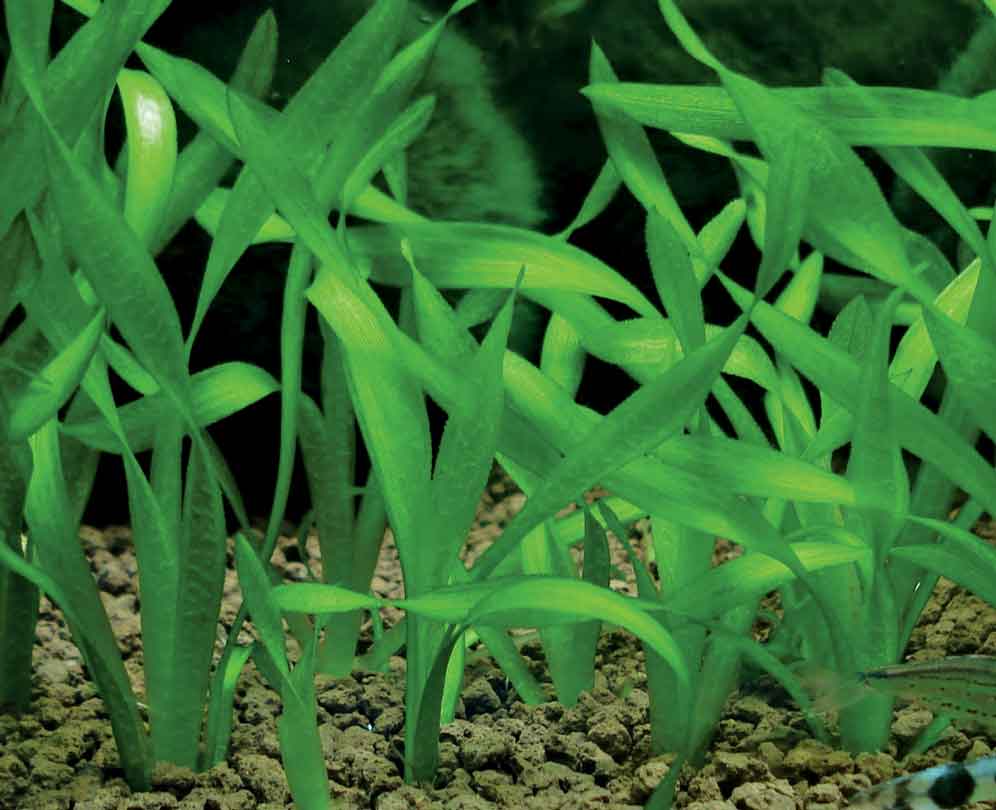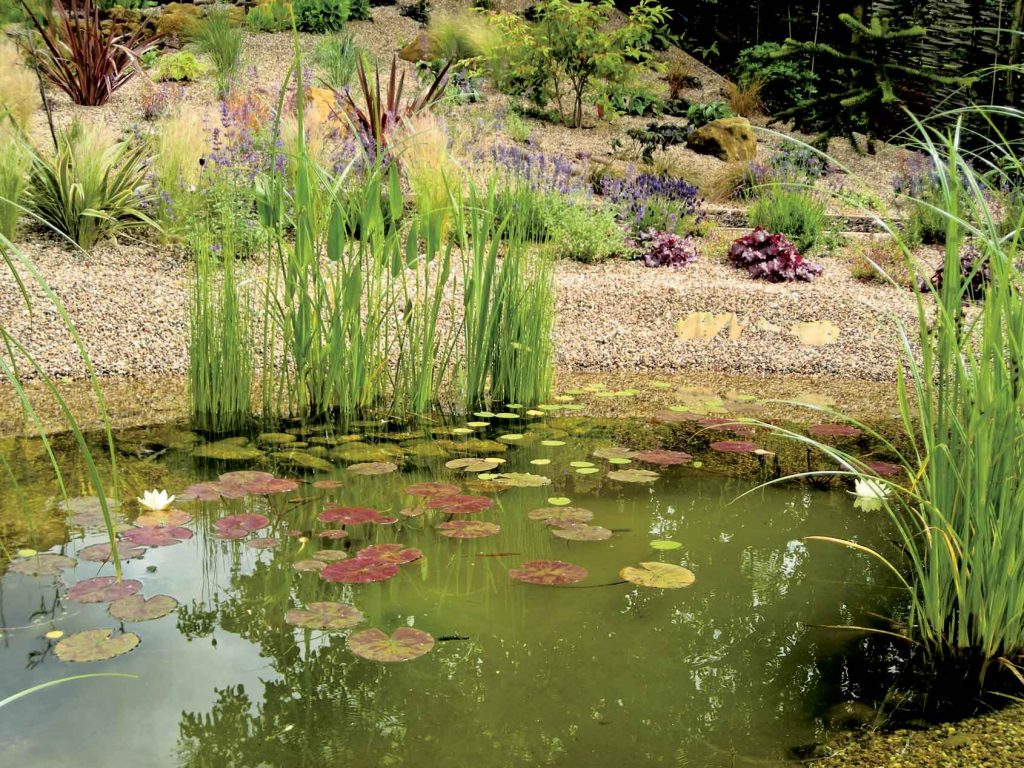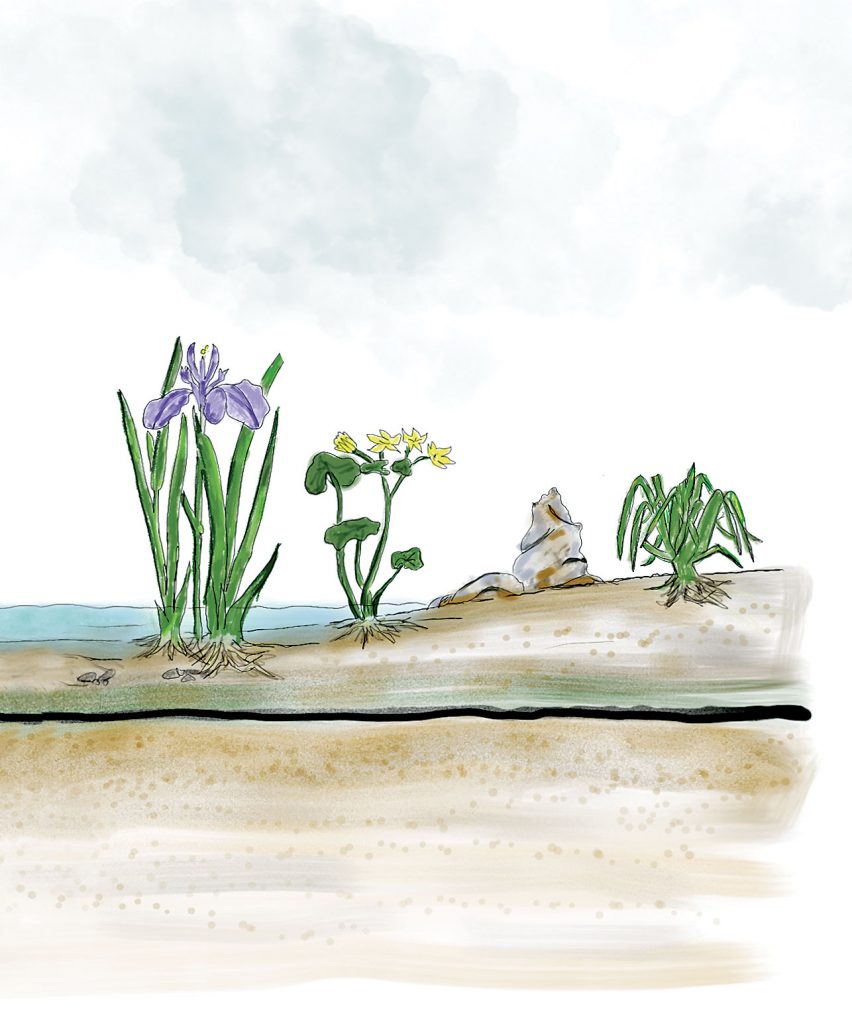Pond’s Aquatic Plants
This term can be applied to any “basin built for water collecting, whether for utilitarian ends (irrigation, fish culture, etc.) or merely ornamental uses” 1.
Ornamental ponds have gained popularity among Mexican architects; therefore I think it is relevant to talk about the species of water plants that can be found on them, the negative myths regarding its construction and maintenance, and finally what they bring to our daily lives.

Lotus flower (Nelumbo nucifera).
TYPES OF POND VEGETATION
Understanding the characteristics of pond vegetation allows us to fully enjoy it. A good first step can be to distinguish the different kind of plants based on the water level where they grow:
Marsh plants or margin plants
Those that like to have its roots submerged, while the rest of the plant remains above water; they usually can be found on the pond margins (1.Iris sp., 2.Typha sp., 3.Colocasia sp., 4.Acorus sp., 5. Caltha palustris sp., etc.).

Photography: By RichardBH from Hamilton, Canada – Cattails, CC BY 2.0, https://commons.wikimedia.org/w/index.php?curid=54163257 
Photography: Marco Millet Medina
Rooted floating plants
They have floating leaves but its stem and rhizome and/or root are planted on the pond bed. (10. Potamogeton sp., 11.Nymphaea sp., Victoria sp., Euryale ferox, etc.).
Free floating plants
Those that can live floating on the surface of a body of water and do not need to be rooted to any kind of soil. (12.Salvinia sp., 13. Eichhornia sp., Azolla sp. etc.).
Submerged plants
They develop completely submerged in water. (6. Elodea sp., 7. Vallisneria sp., 8.Cambomba sp., 9.Najas sp., etc.).

Photography: uni-potsdam.de / Michael Hassler 
Fotografía / Photography: www.bubblesaquarium.com 
Fotografía / Photography: www.mybigsfarm.wordpress.com

Fotografía: henleylandscapes.co.uk_water-gardens
MYTHS ABOUT THE POND
Sometimes, in the construction of a pond, certain problems can arise and this highlights certain myths; undoubtedly, the most common one is that ponds are breeding places for mosquitos. This idea comes from mismanaged ponds, and it is a problem that can be solved easily by adding native fish species like Gambusia sp., Poecilia sp. and other similar species that feed on mosquito larvae, controlling them effectively.
We can also find the myth that green water means dirty water. As a matter of fact, green water in large quantities can cause pH fluctuations and low levels of dissolved oxygen in ponds, but it is a symptom of a nutrient imbalance, probably because the selected fish species are not appropriate, there is inadequate filtering, or just because of seasonal changes.

Cenote de Dzibilchaltún. / Fotografía: lawsonsdriving.blogspot.mx
Another myth is that they have a very expensive maintenance cost and require a lot of time. Not necessarily true. Yes, there are ponds with very demanding plants and fish that require a big investing, but ponds with endemic species are economic and easy to maintain. Besides, they function as small auto-regulating systems; and are also an opportunity to preserve the regional biological heritage.

Cattail (Typha latifolia).
For our region, we can mention the white lily (N. ampla) that can be found all around the Yucatan Peninsula in marshes, cenotes and other bodies of water in the Maya area; besides being the quintessential Mayan flower, it is a plant with floating leaves rooted to the pond bed, its white flowers have a sweet and delicate aroma that enhances the beauty of any pond.

Nicté-Ha
Another aquatic plant that is easy to grow is Typha latifolia, commonly known as “cattail”. It is an easy-to-care marsh plant widely distributed in Mexico; its phytoremediation properties are very useful for cleaning pond water. It even can absorb heavy metals 5.
There are many endemic plants that can adjust perfectly to each region, it is important to know them so we can keep a beautiful pond for a longer time, avoiding excessive maintenance, which can be expensive and tiresome.

The architectural details marge with the pond’s natural beauty
Project: Guillermo Faller
Pond: Nelumbo
Photography: Molino Lab
BOUNTIES OF THE POND
The benefits of a pond are many and diverse. We can start by the aesthetic factor. There are ponds with completely natural features, and also ponds that have sophisticated and modern styles; all of them provide any home or office with that element that captivates when you hear rippling waters during breakfast or whilst waiting in an office, making the experience much more pleasant.
It can also become a space for the preservation of endemic aquatic species. I like calling the pond “the home’s melting pot” because in it we can find architectural details, a collection of endemic plants, a protected area for birds during drought, or even an excellent area for meditation. This is, without question, an element that every home should have.
Full article in our 03 printed edition.
1 Diccionario de la Real Academia Española 2017.
3 La fitorremediación aprovecha la capacidad de ciertas plantas para absorber, acumular, metabolizar, volatilizar o estabilizar contaminantes presentes en el suelo, aire, agua o sedimentos como: metales pesados, metales radioactivos, compuestos orgánicos y compuestos derivados del petróleo. / Phytoremediation is the ability that certain plants have to absorb, accumulate, metabolize, volatilize or stabilize polluting agents in the soil, air, water or sediments such as: heavy metals, radioactive metals, organic compounds, and oil-derived compounds.
4 María del Socorro Santos-Díaz et al., “Induction of in vitro roots cultures of Thypha latifolia and Scirpus americanus and study of their capacity to remove heavy metals,” en Electronic Journal of Biotechnology, vol. 10, núm.













